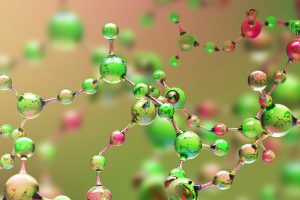
Scientists develop mathematical modeling tool to predict polymer properties
Canadian Plastics
Materials Research & DevelopmentThe tool will allow researchers to predict the properties of polymer networks before they're even created.

Image Credit: Adobe Stock/denisismagilov
An international team of researchers has developed a powerful mathematical modeling tool that can be used to predict the properties of polymer networks before they’re even created.
Key to understanding the new tool is remembering that polymers networks are made up of long chains of molecules, like a string of pearls or spaghetti – this new model predicts the connections between the spaghetti-like strands by using advanced mathematics and molecular simulations.
In the study, published in Nature Materials, the researchers from Ghent University (UGent) in Belgium, QUT University in Brisbane, Australia, and Stanford University in Princeton N.J. developed the method for predicting polymer properties. According to Professor Dagmar R. D’hooge of UGent, the tool outlined in the research was an aid in the design of new super molecular polymers in areas such as drug delivery, gene transfection, and biomedical applications.
“For the first time, this is a predictive tool for material properties of networks – from the smallest building block of the molecule up to how hard is the material, is it impact resistant or is it just a soft blob,” D’hooge said.
“Recent chemistry developments have included unconventional properties such as self-healing, conductivity and stimuli-responsiveness in polymer networks, giving them a large potential in advanced applications such as recycling, drug delivery, tissue engineering scaffolds, gas storage, catalysis and electronic materials,” said UGent’s Professor Barner-Kowollik. “It’s a huge task to characterize polymer networks…[but] we’re making a real step forward by fusing expertise from theoretical modelling to experimental chemists who provide examples by which the model can be tested.”
The work shows how molecular building blocks can be assembled both temporally and spatially to create accurate materials structures including defects and resulting structure-property relationships. This combination of both kinetics and molecular spatial assembly hasn’t been achieved before, the research team said.
Professor Barner-Kowollik said the ultimate dream for experimental chemists is to have a computer program that takes the unknown out of experiments. “Imagine if you could have a supercomputer that, even before you hit the lab, would be able to say what the likely outcome would be,” he said. “This is a step towards that.”
